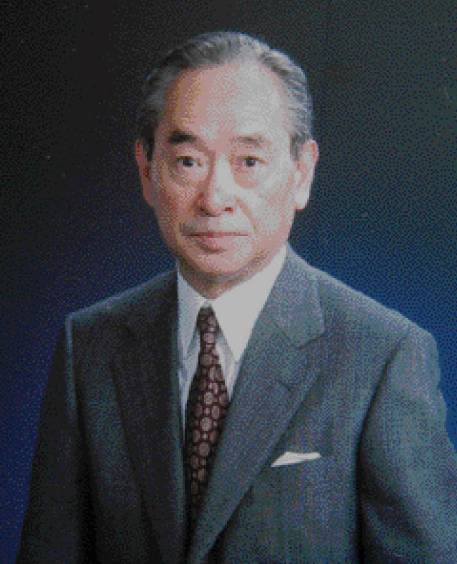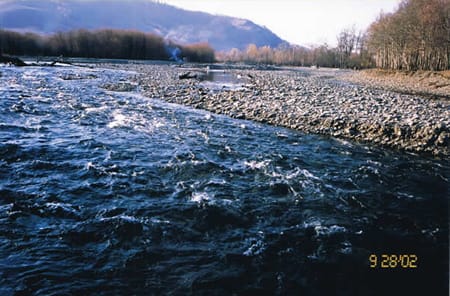
Masakazu Seino
1930 - 2007
On 7th March, 2007, the epilepsy communities of Japan, Asia and the whole world lost one of their most illustrious members. Dr Masakazu Seino passed away suddenly in his home in Tokyo.
Dr Seino was born in Hokkaido, in the northern part of Japan on July 25, 1930. He graduated from Hokkaido University School of Medicine in 1954. During his days as a medical student, he met a professor of philosophy, Prof. F Oka who interested him in the study of the brain and the mind. Prof. F Oka, whom Dr Seino adored all his life, had a strong influence on Dr. Seino’s life. After graduation in Hokkaido, Dr Seino moved to the National Tokyo First Hospital in 1954 to 1961 to undergo training in neuro-psychiatry. He then went to Institute of Neurological Research, University of British Columbia, Canada working under Prof. Juhn A Wada as a postdoctoral research fellow. Prof. Wada was a friend of Prof. F Oka. During his stay in Vancouver, Dr Seino was introduced to Prof. H Akimoto of Tokyo University School of medicine. Prof. H. Akimoto was the Director of National Musashi Institute for Mental & Nervous Disease, Tokyo. Prof. Akimoto was in Vancouver as the representative of Japan attending the International Epilepsy Congress. This encounter with Prof. Akimoto changed Dr Seino’s life. Upon Prof. Akimoto’s invitation, in 1963, Dr Seino came back to Japan and started Japan’s first epilepsy ward and clinic in the National Musashi Hospital until 1975. During these 12 years, Dr Seino founded an association for people with epilepsy and their family members, which in 1976 became the Japan Epilepsy Association. Dr Seino also introduced the use of serum levels to monitor antiepileptic drugs, and video-EEG monitoring. Serum drug monitoring and video-EEG eventually became the standard investigation tools in clinical practice in Japan. In 1975, Dr Seino moved to Shizuoka and founded the National Epilepsy Center to provide comprehensive care of epilepsy with Prof. Toyoji Wada who was one of leading epileptologists in Japan. He was the Medical Director and Director General of the Center till 1996. After that, he remained as the Honorary President of the Center until his death.
Dr Seino was Board Member of Japanese Epilepsy Research Group from 1967 to 1981 and was appointed as its Secretary General from 1973 to 1981. In 1981, he became a Board Member of Japan Epilepsy Society. He was President of the Society from 1989 to 1997.
In 1981, the International Epilepsy Congress was held in Kyoto. Dr Seino was the Secretary General. He was elected Vice-President of the International League Against Epilepsy (ILAE) from 1981 to 1989, and Treasurer from 1989 to 1993. He was also a member of the Commission on Classification and Terminology, ILAE from 1981 to 2006, Chairman of the Rules Commission, ILAE from 1983 to 1985, Commission on Nomination, ILAE from 1985 to 1989, and member of the Commission on Constitutional Affairs, ILAE from 1993 to 2006.
Dr Seino attributed the first milestone in regional cooperation of epilepsy in Asia to the International Epilepsy Congress (Kyoto) in 1981. As the organizers in Japan became aware for the first time that a significant number of epileptologists in Asia were enthusiastic about sharing their experiences.(1) After that, the National Epilepsy Center in Shizuoka began to take in fellows from various parts of Asia for further training.
At the occasion of the 25th Annual Meeting of Japan Epilepsy Society held in Shizuoka in 1991 where Dr Seino was President, six leading Asian epileptologists were invited to speak at a special workshop on “Epilepsy in Asia.” The speakers became the founding members of the Asian and Oceanian Epilepsy Organization (AOEO). Dr Seino was elected as the first Chairman. The inaugural Asian and Oceanian Epilepsy Congress (AOEC) by the AOEO was held in Seoul (1996) with Dr Seino as President. The Seoul AOEC had attendance of more than 400 delegates. This was followed by the second congress in Taipei (1998), the third in New Delhi (2000), and the fourth in Nagano (2002).

During the Seoul AOEC, the ILAE Executive Committee founded a regional committee for Asia and Oceania and named it the Commission on Asian and Oceanian Affairs (CAOA). The objectives were to be a vehicle for regional cooperation and promote development of epilepsy in the region. There were 12 members and Dr Seino was the Chairman for the term 1997 to 2001. There were regular business meetings which helped to build a strong bond among the Asian epilepsy leaders. These meetings cost money, Dr Seino successfully convinced his friend, Dr Tadokoro to sponsor the CAOA activities from 1998. In 2002, Dr Seino proposed the formation of Asian Epilepsy Academy (ASEPA) modeled after European Epilepsy Academy (EUREPA) to promote the development of epilepsy education in the region. Dr Seino was appointed Chair of ASEPA from 2003 till 2007. From 2002 to date, there were more than 20 workshops with different themes held in various parts of Asia. Since 2002, the ASEPA with Research Epilepsy Foundation of Japan and other partner organizations awarded more than 20 fellowships to young physicians for further training in epileptology with the awardees being selected by ASEPA. Together with the ASEAN Neurological Association, the ASEPA also started the certification examination for EEG. As Dr CT Tan, Chair of CAOA (2003-2007) commented: “It was Dr Seino who conceptualized the idea of regional cooporation to develop epilepsy in Asia. He also initiated action, laid the necessary structure, raised funds, convinced and persuaded his colleagues in Japan and in the region to labor toward this goal, and himself remained dedicated to this noble task right till the end of his life. As an indication of the success of his effort, in 1991, there were three ILAE chapters in the Asian region. In 2003, there were 14 chapters, and 17 chapters in 2007. The ILAE “flag” covered 5% of Asian populations in 1991, and 58% in 2003, and 95% in 2007.”
Despite his many clinical and administrative responsibilities, Dr Seino remained strongly committed to scientific writing and publication. He was the first author of 71 articles and chapters, and co-authored 141 articles and chapters. For more than 20 years, he personally translated the newsletter of International Bureau of Epilepsy (IBE), International Epilepsy News into Japanese. His often repeated comment was: “Without publication of proceedings, organizing of conferences are meaningless”.
As a person, Dr Seino was marked by focused purposes and persistence to achieve his goals. He was most supportive and kind to the young. He was also very studious. He was still attending English tuition at age of 76 in his last year. His main hobby was photography. He was a collector of old non-digital cameras. Dr Seino was survived by his beloved wife, two children and four grandchildren. Mrs Seino was before retirement a dermalogist, and Dr Ken-ichiro Seino, the only son was an immunologist.
A thousand winds blow the cherry blossoms, a petal of cherry blossom flies to our heart. Dr Seino lived a beautiful life. He will continue to live in our hearts. May we emulate his great example and continue to strife to fulfill his dream for Asia.
Kazuichi Yagi MD, PhD
Honorary President, National Epilepsy Center, Shizuoka Institute of Epilepsy and Neurological Disorders
Past President, Japan Epilepsy Society
Member, Commission on Asia and Oceanian Affairs, ILAE
Reference
1. Seino M. The development of international cooperation of epilepsy in Asia. Neurol J Southeast Asia 2003; 8: 49-52
As originally published in Neurology Asia 2007;12:69-71
Subscribe to the ILAE Newsletter
To subscribe, please click on the button below.
Please send me information about ILAE activities and other
information of interest to the epilepsy community